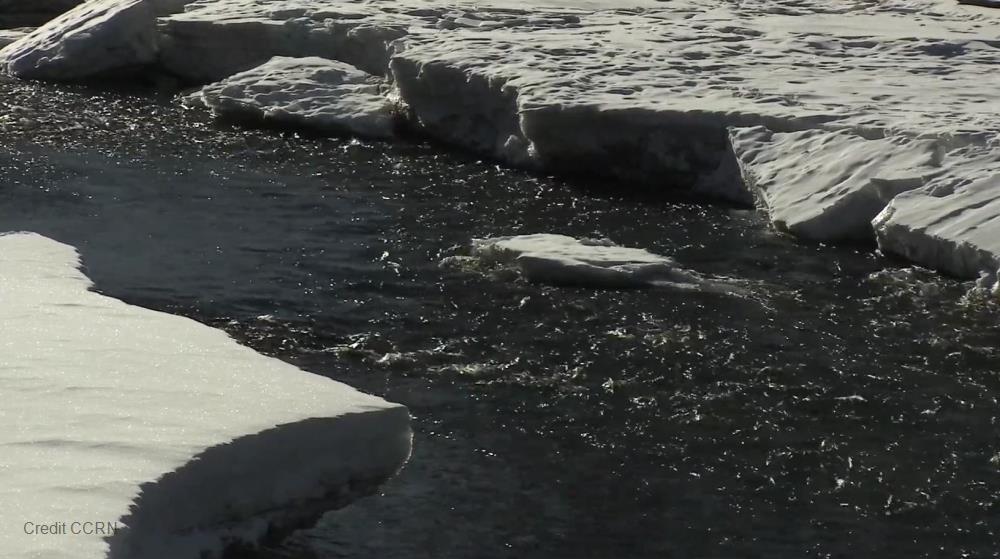
Related items loading ...
Section 1: Publication
Publication Type
Conference Poster
Authorship
Fréchette, E., Sekerinski, E., & de Lannoy C-F.
Title
Antifouling and Oxygen Permeability Properties of Zwitterionic Polymer Coatings for Long-Term Dissolved Oxygen Surface Water Monitoring
Year
2022
Publication Outlet
AOSM2022
DOI
ISBN
ISSN
Citation
Fréchette, E., Sekerinski, E., & de Lannoy C-F. (2022). Antifouling and Oxygen Permeability Properties of Zwitterionic Polymer Coatings for Long-Term Dissolved Oxygen Surface Water Monitoring. Presented at: GWF2022 - Global Water Futures Annual Open Science Meeting. 16-18 May 2022.
Abstract
The assurance of global water security has become a crucial aim for humanity in the 21st century. Although Canada’s freshwater reserves are among the world’s largest, many Indigenous communities lack reliable means to access clean water. A variety of factors such as community remoteness, fiscal mismanagement, archaic environmentally racist policies, and improper pollutant disposal have all played a role in the precarity of Indigenous water management. During the implementation of a community based participatory research approach to monitor the surface water of Six Nations of the Grand River (SNGR), a series of water quality monitoring stations (WQMS) were developed, each monitoring five common water quality parameters. However, these sensors are prone to fouling, which can significantly reduce the reliability of their collected data after extended operation in the field. In this research, a series of antifouling zwitterionic polymer coatings is investigated for use on a cheap, commercially available dissolved oxygen (DO) sensor. Zwitterions are being investigated as these polymers are tuneable for improved antifouling ability, are relatively easy to fabricate, and are environmentally friendly. However, research is lacking as to whether zwitterionic coatings would degrade the sensor signal strength by inhibiting oxygen transfer across a dense polytetrafluoroethylene (PTFE) membrane at the sensor’s surface. As such, the zwitterionic copolymer sulfobetaine methacrylate-co-glycidyl methacrylate was prepared via free radical polymerization and was grafted to a series of PTFE membranes via polydopamine (PDA) and branched polyethyleneimine (PEI). The antifouling properties of these surfaces were examined following two-week immersion in nonspecific bacterial solutions and in bovine serum albumin (BSA) solutions. Preliminary tests confirm lower foulant adhesion to the coated membranes compared to the non-coated ones, as suggested in literature. A dissolved gas diffusion cell was constructed using two 1-litre vessels connected by a central channel in which sits a sample PTFE membrane. Pure O2 gas is bubbled into a DO rich aqueous environment to observe the oxygen transfer rates from the vessel of oxygen rich water (~35 ppm) to the vessel of oxygen poor water (~5 ppm), testing zwitterionized and non-zwitterionized membranes, as well as fouled and unfouled membranes. Preliminary results indicate a lack of a statistically significant difference of DO transfer between zwitterionized and non-zwitterionized membranes, which points to using zwitterionic antifouling coatings as a viable option for long-term environmental endeavours on DO sensors.
Plain Language Summary
Section 2: Additional Information
Program Affiliations
Project Affiliations
Submitters
|
Erik Fre´chette | Submitter/Presenter | frecheee@mcmaster.ca | McMaster University |
Publication Stage
N/A
Theme
Water Quality and Aquatic Ecosystems
Presentation Format
poster plus 2-minute lightning talk
Additional Information
AOSM2022 Sensors and Sensing Systems for Water Quality Monitoring First Author: Erik Fréchette, Department of Chemical Engineering McMaster University Additional Authors: Charles de Lannoy, Department of Chemical Engineering McMaster University


 GWFNet
GWFNet Master
Master Data
Data Research
Research Map
Map
 Advanced
Advanced Tools
Tools
 . . .
. . .
 Metadata Editor
Metadata Editor
 Record List
Record List
 Alias List Editor
Alias List Editor
 Legacy sites
Legacy sites